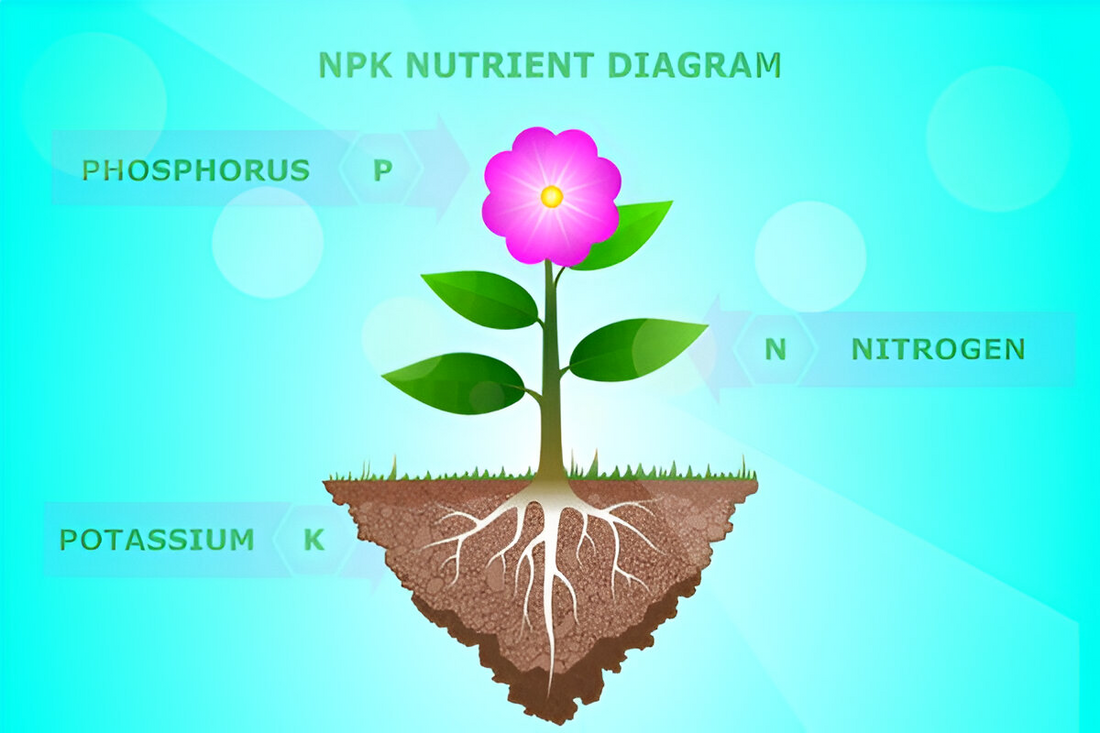
Understanding NPK Fertilizers:
Share
Confused by numbers like 20-20-20 or 5-15-45 on fertilizer bags? These are the NPK values — a quick way to know what nutrients your plants are getting. This guide will help you read fertilizer labels correctly and choose the right blend for vegetables, flowers, trees, or indoor plants.
What Does NPK Stand For?
NPK stands for the three major nutrients all plants need to grow:
| Nutrient | Function | Deficiency Signs |
|---|---|---|
| N (Nitrogen) | Leaf and stem growth | Yellowing leaves, weak stems |
| P (Phosphorus) | Roots, flowers, fruit | Poor blooms, purple leaf edges |
| K (Potassium) | Immunity, water balance | Brown tips, reduced heat tolerance |
In warm climates, extra potassium (K) can help plants survive heat stress and use water more efficiently — especially during peak summer months.
How to Read NPK Fertilizer Ratios
The numbers on a fertilizer bag show the percentage by weight of each nutrient.
For example:
- 20-20-20 means 20% each of nitrogen, phosphorus, and potassium — a balanced fertilizer.
- 5-15-45 has 5% nitrogen, 15% phosphorus, and 45% potassium — ideal for flowering and fruiting.
The rest of the product (e.g. 35% in 5-15-45) usually contains fillers, micronutrients, or carriers that help with even application.
When to Use Each NPK Ratio
Vegetables
- Use 20-20-20 in early growth for leafy development.
- Switch to 5-15-45 once fruiting starts — great for tomatoes, chillies, okra, etc.
Flowers
- Choose 5-15-45 or similar high-phosphorus blends for blooming plants like petunias, marigolds, zinnias, vinca.
Trees and Shrubs
- A balanced 20-20-20 supports healthy foliage and root systems in ornamentals or fruit trees.
Indoor Plants
- Most foliage plants (e.g. snake plant, money plant, rubber plant) thrive with 20-20-20.
- For flowering varieties, switch to a bloom booster with more phosphorus.
How to Use NPK Fertilizer Effectively
Feed at the Right Time
- Apply during active growth — when plants are pushing out new leaves, forming buds, or fruiting.
- Avoid fertilizing in extreme heat or dormancy phases.
Match the Ratio to the Stage
- Leafy growth: Use higher nitrogen.
- Flowering/fruiting: Increase phosphorus and potassium.
Mix and Apply Correctly
- Overuse can cause root burn or stunted growth.
- For water-soluble NPK: Mix 1 teaspoon per 1 liter of water, or follow label instructions.
Apply to the Root Zone
- Pour into the base of the plant, not on leaves (unless labeled for foliar use).
- Lightly water before and after to boost absorption.
Repeat at Safe Intervals
- Liquid or water-soluble: Every 10–15 days
- Granular or slow-release: Every 4–8 weeks, depending on soil and product strength
Types of NPK Fertilizers
- Powder (Water-Soluble) – Quick absorption; great for fast feeding or foliar sprays
- Granular – Easy to apply and ideal for garden beds or lawns
- Liquid – Fast-acting and perfect for pots or container plants
- Slow-Release – Feeds gradually over weeks or months with minimal effort
Frequently Asked Questions (FAQs)
What is the best NPK ratio for vegetables?
Start with 20-20-20 for early growth, then switch to 5-15-45 during flowering and fruiting.
Is NPK fertilizer safe for edible plants?
Yes — but wait 5–7 days before harvesting, and always wash produce thoroughly.
Can I use NPK for all plant types?
Yes, but match the ratio to the plant’s needs. Leafy greens need more nitrogen; flowering or fruiting plants need more phosphorus and potassium.
How often should I apply NPK fertilizer?
- Water-soluble: Every 10–15 days
- Granular/slow-release: Every 1–3 months, based on the product
Can I mix NPK with other fertilizers or compost?
Yes, just ensure the overall nutrient levels aren't too high. It's best to test small amounts first.

